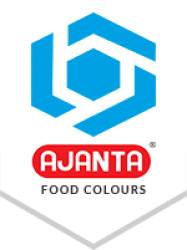Italy, officially known as the Italian Republic, is a beautiful and historically rich country located in Southern Europe. Italy is known for its art, culture, cuisine, and influential contributions to global history. It shares its land border with France to the west, Switzerland and Austria to the north, Slovenia to the east, and the two enclaves of Vatican City and San Marino. Italy also shares maritime borders with 9 countries and those are Albania, Algeria, Croatia, Greece, Libya, Malta, Montenegro, Spain, and Tunisia.
Italy has the third-largest economy in the Eurozone (after Germany and France) and is the eighth-largest in the world by nominal GDP. The Italian manufacturing sector plays a crucial role in the country's GDP. There are many manufacturing industries, such as food, cosmetics, pharmaceuticals, personal care products, etc., and in the manufacturing of any product various components play a crucial role.
Some help in the manufacturing of products while others help in increasing the visual appeal of products, one of them is colours. Colours play a crucial role in attracting the attention of consumers, that increase sales and brand recognition. Italy manufactures colours, but they are not sufficient to fulfill all the country's colour-related demands. To fulfill the colour-related demand of the country, Italy imports colours from other countries as well. Some of the countries that export colours to Italy include India, France, Germany, and the United States of America.
Italian Industries Where Colours Play a Vital Role
Colours play a crucial role in various manufacturing industries in Italy. Some of the industries where colours play an important role include:
Food and Beverages Industry
Colours play a crucial role in the food manufacturing industry of Italy. They make the food products visually appealing and attractive, which increases sales. However, food manufacturers often face some challenges in selecting the right colour for their products. They want colours that do not fade or change colour over time on products. In this case, synthetic food colour is the best option for overcoming all the colour-related problems of Italian food manufacturers. As these colours do not fade or change on the product and make them new during the manufacturing and storage of the product. Many food manufacturing industries are located in Italy, most of them located near Parma (known as Italy’s "Food Valley), Modena, Bologna, Milan, Naples, and Rome. According to Statista, the revenue of the food market of Italy amounts to US$194.86 billion in 2025, and it is expected to grow annually by 3.39% (CAGR 2025-2030).
Cosmetics Industry
In the cosmetics industry of Italy, colours play an important role. Colours make cosmetic and personal care products including lipsticks, eye-lashes, mascaras, foundation, concealer, blush, BB & CC Cream, primer, eyeshadow, lip gloss, nail polish, face wash, shampoo, soap, toothpaste, and baby powder visually appealing and fun. Still, Italian cosmetic manufacturers often face some challenges in selecting the right colour for their products. Synthetic food-grade colours resolve all the colour problems of cosmetic manufacturers in Italy. There colours are specially prepared that giving a vibrant, appealing look to a range of beauty and personal care products and do not fade or change on them over time. Most of the cosmetic manufacturing industries of Italy are situated near its big cities like Rome, Vicenza, Florence, Cremona, and Parma. According to Statista, the revenue of the Beauty & Personal Care market in 2025 amounts to US$12.80 billion, and it is projected to experience an annual growth rate of 2.19% (CAGR 2025-2030).
Pharmaceuticals industry
Colour also plays an important role in the Italian pharmaceutical manufacturing industry. They make medicines such as tablets, capsules, syrups, injectables, and health supplements visually appealing, which reduces the chances of taking the wrong medicines. However, pharmaceutical manufacturers in Italy often face some challenges in selecting the right colour. By using synthetic food-grade colours in their medicines manufacturing, they overcome various colour-related problems. These colours make the medicines visually appealing and do not leak or fade on them. Most of the colour merchants, suppliers, and big colour distributors import colourants from other countries and sell them in Italy. They import colours at low prices and sell them at high prices, making a profit on each sale. Most of the sell the colourant under the same brand name from the bought, while some create their own labells and sell under their branding. In Italy, most of the pharmaceutical manufacturing industries are located near Rome, Florence, Parma, L'Aquila, and Verona. According to Statista, the revenue of the pharmaceuticals market of Italy is forecasted to achieve a revenue of US$29.93 billion by the year 2025, and it is anticipated annual growth rate (CAGR 2025-2029) is 3.02%, leading to a market volume of US$33.71 billion by 2029.
Chocolate Industry
Colours are a vital part of the Italian chocolate industry. It makes chocolate products attractive to consumers, especially for children and women, who are the prime buyers of chocolate products. Still, chocolate manufacturers in Italy often face some challenges in selecting the right colour for their chocolate products. They want high-quality chocolate colours that are safe and do not fade on chocolates over time. Synthetic food colours are the best option for this, as these colours are approved by various governmental bodies globally, such as the FDA (Food and Drug Administration), Italian Ministry of Health, and EFSA (The European Food Safety Authority), which shows the safety of these colours for human consumption. Synthetic food colours come in different vibrant colour shades that make the chocolate product visually appealing and do not fade or change over time. In Italy, most of the chocolate manufacturing industries are located near Turin (known as Italy’s "Chocolate Capital of Italy"), Perugia, Modica, Florence, and Milan. According to Statista, the revenue of the Chocolate Confectionery market of Italy amounts to US$2.49 billion in 2025, and it is expected to grow annually by 2.52% (CAGR 2025-2030).
Animal Feed Industry
In the Italian Animal feed manufacturing industry, colour plays a vital role. They make the feed appealing for animals, which encourages them to eat properly and stay healthy. However, pet food manufacturers in Italy face some challenges in selecting the right colour for their products. They want premium quality food colours that make feed appealing. Synthetic food colours are the best option to overcome all the colour-related problems of pet food. These colours come in various shades and help in the differentiation of feed like in poultry, swine, or cattle, etc. Most of the pet food manufacturing industries of Italy are located near Milan, Verona, Parma, Bologna, and Modena. According to Statista, the revenue of the Italian Pet Food market amounts to US$4.01 billion in 2025, and it is expected to grow annually by 2.18% (CAGR 2025-2030).
Cultural Preferences of Colours in Italy
Italian people prefer some colours that reflect their culture, which influences their purchasing decisions. In food products, Italian people prefer natural-looking colours like red, orange, green, and yellow, etc., while in cosmetic products, they like vibrant and appealing shades such as red, pink, brown, and purples. In pharma products, they are looking for white, blue, and green colours because they represent purity, safety and professionalism. Italian manufacturers are aware of these cultural favorites of their people and use colour strategically in their products to boost their sales and brand recognition in the market.
Regulatory Guidelines on Colours in the Italian Market
Colour, whether they are synthetic or natural, must be approved by the governmental body of the country for use in products that human consumers or intract. In Italy, the Italian Ministry of Health (Ministero della Salute) is the responsible body that checks the quality and safety of colours and imposing various regulatory standards on them. To ensure the quality and safety of colourants, this governmental body conducts inspections, sampling, testing, and enforcement actions from time to time.
In Italy, starting a new business is not just an easy task. Startups have to face various challenges such as competition with the brands that already sell their products in the market, match the pricing of the product, and make people aware of their product. In this, manufacturers can resolve their many problems by only using synthetic food colours in their products. These colours come in various colour shades that allow startups to differentiate their product from their competitors’ products, which increases their products’ recognition in the market. Synthetic food colours are an affordable option compared to other alternatives like natural food colours that allow startups to launch their product at competitive prices that increase sales.
If you are a manufacturer or a startup business in Italy and looking for a high-quality synthetic food colours manufacturer, you can go with Ajanta Food Colours, a leading synthetic food colours manufacturing company in India that exports its quality colours to various European countries, including Italy. For the quality and safety of their colourants, Ajanta Food Colours has earned prestigious certifications and accolades from India and other global markets, proving its commitment to quality and over 75 years of legacy in the field of synthetic food colours manufacturing industry.
To know more about Ajanta Food Colours, or its high-quality colourants please contact us today!





_1742983447.jpg)